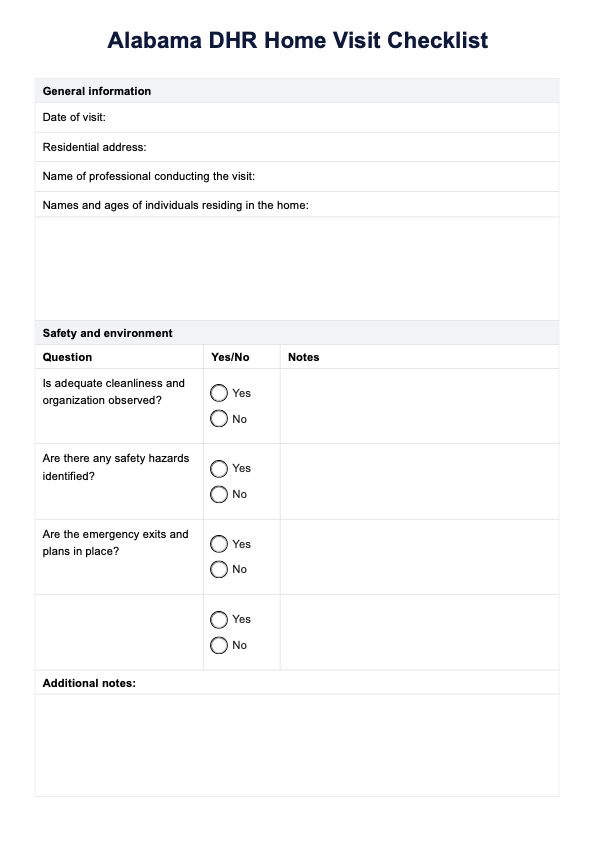You can create a checklist using a template from official sources or specialized software such as Carepatron. Customize it to align with Alabama DHR guidelines and specific assessment criteria.

Alabama DHR Home Visit Checklist
Download the Alabama DHR Home Visit Checklist template for comprehensive, standardized assessments. Align with state guidelines for effective evaluations.
Alabama DHR Home Visit Checklist Template
Commonly asked questions
Healthcare professionals, social workers, and government agencies use checklists during in-home assessments. They are employed in child welfare investigations, elder assessments, and post-hospitalization follow-ups.
These checklists systematically evaluate living conditions, safety, health, and support systems during in-home visits. Professionals document observations, identify areas for improvement, and make recommendations based on the checklist results.
EHR and practice management software
Get started for free
*No credit card required
Free
$0/usd
Unlimited clients
Telehealth
1GB of storage
Client portal text
Automated billing and online payments











